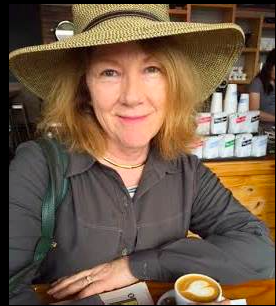Labor history is an incredibly rich and varied field of study. It includes work that is paid and unpaid. It includes histories of enslaved peoples. It includes the activities, politics, and interests that workers pursued off the job. And it includes diverse movements for economic justice, such as efforts to form unions and fight for collective bargaining rights. Labor history is also about social class, and how class shapes the way people view the world around them and their interactions with one another.
As we seek ways to protect and interpret large landscapes in the 21st century, it makes sense to link these efforts to histories of work. The types of labor people did – and continue to do – is often intimately tied to the world around them. Understanding how people shaped a place through their work and how that place, in turn, shaped culture and community (at local, state, national, and international levels), can be a key element to telling the story of a landscape over time.
***
Working in partnership with Dr. Roneva Keel, I recently developed a digital public history and mapping project that traces the route of a historic 1966 march by farmworkers through California’s Central Valley. The workers who set off from the small town of Delano on March 17, 1966, had already been on strike for 6 months. Their destination – some 300 miles distant – was the state capital of Sacramento. The predominately Mexican, Mexican American, and Filipino workers refused to harvest grapes in the fields around Delano until the growers met their demands for higher pay, safer working conditions, and recognition of their unions, the National Farm Workers Association (NFWA) and the Agricultural Workers Organizing Committee (AWOC).
The strikers, like other farmworkers, lacked the basic labor protections guaranteed to other American workers, including the right to union representation and equal treatment under the law. They could not appeal to the federal government if their employers refused to bargain with their unions, for example. Under federal law, farmworkers had no legal basis for making their demands. Instead, they took their pleas for justice directly to the American public.
From March 17 to April 10, 1966, the farmworkers and their growing number of supporters marched to shine a light on the conditions in the fields, exerting pressure on growers and government officials to finally take action. By the time the march concluded in Sacramento, the NFWA had won its first union contract, a landmark victory for the farmworkers and the beginning of what was not only a labor movement, but a cause—La Causa—demanding for farmworkers the fundamental rights and freedoms to which other workers were entitled.
The 1966 march was not only a part of the farmworkers’ struggle for economic justice; it was a key moment in the civil rights struggles of the 1960s. The farmworkers who marched from Delano to Sacramento represented the large, seasonal labor force, composed overwhelmingly of people of color, whose labor made California’s thriving agricultural industry possible. Although their labor produced fortunes from the soil, they were subjected to poor wages and working conditions. By marching though the agricultural lands made rich by their labor, the farmworkers demonstrated that their labor and civil rights struggles were – and continue to be – written onto the landscape itself.
To learn more about the march and the route taken by the workers and their supporters, see the insert below or follow this link for a wider, full screen view. The map is part of the larger project available here.
***
President Barack Obama established the César E. Chávez National Monument (Monument) in October 2012. The site, which is known as Nuestra Señora Reina De La Paz (La Paz), became the United Farm Workers (UFW) headquarters during the 1970s and continues to serve that function today. Chávez himself also lived at La Paz for several decades before his death in 1993. His grave, and that of his wife, Helen Fabela Chávez, are located at the site as well.
The Monument is one part of a nationally significant grouping of places connected to the long history of farmworker organizing and struggle in California and beyond. That history connects the farmworker movements during the Great Depression to the ongoing fight for justice in the fields today. The Forty Acres, the first UFW headquarters, is located in Delano and has been recognized as a National Historic Landmark. So too has the Our Lady of Guadalupe Mission Chapel (later renamed McDonnell Hall) in San Jose. Chávez attended mass at Our Lady of Guadalupe in the 1950s and 1960s, and the building brought together community members and organizers, like Chávez and Dolores Huerta, connected to the Community Services Organization (CSO).
The individual sites highlighted above are part of the broader landscape of civil rights and labor struggle connected to the farmworker movement in California. The 1966 march route passed through more than 50 towns and cities, for example, that are also part of the story. So too are the fields themselves, along with housing, health clinics, and other places associated with daily life, all of which hold tremendous meaning.
***
In considering future directions for large landscape conservation, highlighting past and present stories of labor, including histories of struggle, makes sense. People have always been central to the conservation of place, even if the systems and bureaucracies of land management agencies often fail to fully recognize this reality. Beginning in the 1970s, protecting varied sites and landscapes of labor became a priority for many community groups, who eventually managed to gain limited buy-in from local, state, and federal entities. The many State and National Heritage Areas with a focus on work and working people are a testament to this movement and its potential to draw in diverse coalitions of partners and supporters.
Credit for image on homepage: Jon Lewis Photographs of the United Farm Workers Movement. Yale Collection of Western Americana, Beinecke Rare Book and Manuscript Library.


